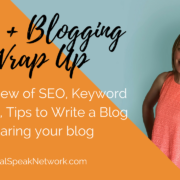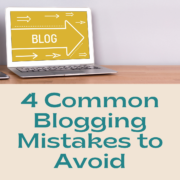Ahh! Run for the hills, blogging is dead!
Wait, what? After all this work blogging every day for 2 months, I’m now saying blogging is dead? Let’s step back a moment.
There is always someone talking about social media being dead or blogging being dead, but the truth of the matter is that even if one strategy isn’t working as it used to, another strategy jumps in and takes its place.
Let’s take a look at blogging.
[Disclaimer: I do not think blogging is dead. It has absolutely changed in the past year or two years, but doesn’t everything shift, change, and get better over time?]
In 2015, Hubspot reported ideal blog lengths. The report stated that:
- Shorter is better for blogs. In fact, Forbes even published an article stating “After 750 word — or sometimes after only half that — you risk losing your readers’ attention.” [Source]
- Most posts on WordPress were only 280 words long.
- In general, however, for this short blog post strategy to work, you needed a large network and needed to post frequently. In essence, your blog feed started looking more like a social media account news feed.
- Around this time, articles also started popping up that stated blogs under 750 words received the most shares, whereas blogs over 1,200 or 1,500 words ranked the highest organically.
Blogging in 2016
As the months passed, this shifted drastically! By early 2016, it started becoming clear that not only was content still king, but LONG content reigned top. The longer the content, the more shares and inbound links you would find. But, it wasn’t just articles 1,500 – 2,000 words long. We were now talking 3,000 – 10,000 words long!
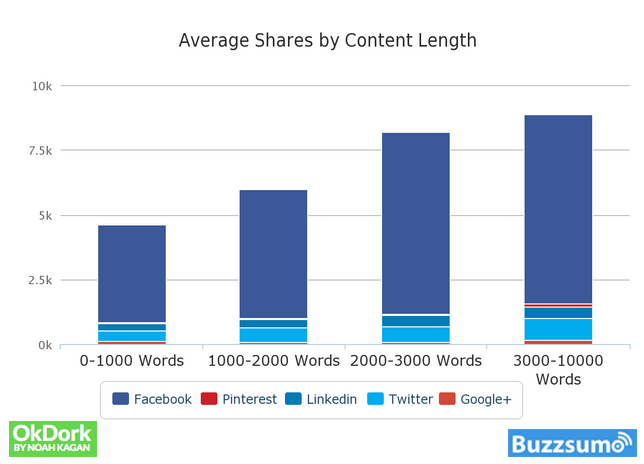
What this means is that even though in 2015 bloggers were posting short blogs frequently, they were overlooking the importance and response they could get by going more in depth in a topic. Most bloggers weren’t taking the time to go into depth about their topics. The surge in shares for pieces of content that were between 3,000 – 10,000 words went against older common sense that people would lose interest in longer articles. The truth was that these longer articles actually capture more of the reader’s attention!
Looking back at 2015/2016 it actually was that bloggers didn’t want to spend the time going into depth.
During this time, as well, Medium.com completed a study on the optimal post length to capture a reader’s attention. Not surprisingly, considering the data we’ve already reviewed, the best length was approximately 7 minutes, or between 1,500 and 1,750 words. Again, however, we see the same trend that a majority of posts on Medium represent 3 minute reads. These 3 minute reads were viewed the most frequently, because there are more of them, but the best length for engagement was at the 7 minute mark.
Total Engagement or Time on Article
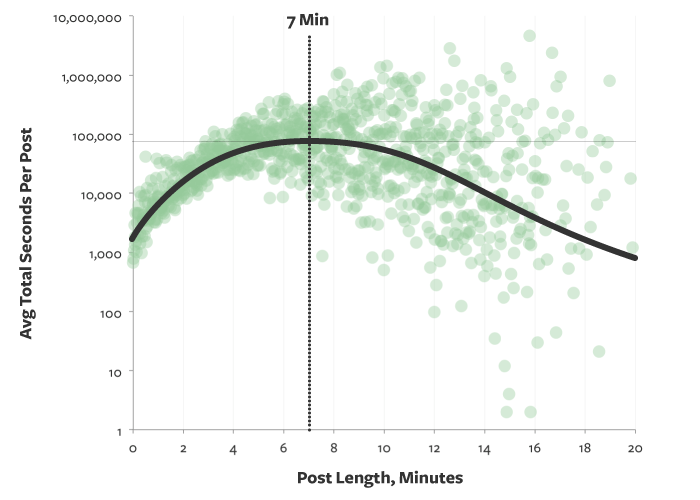
Total Views By Post Length
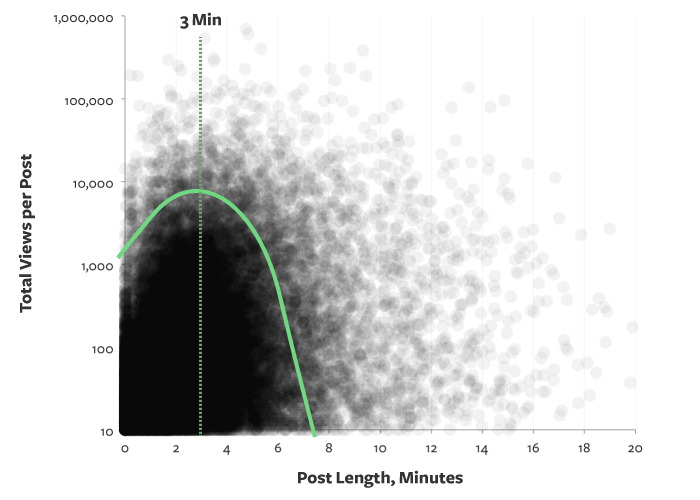
Okay, so it is pretty clear from this data that blog posts generally have been getting longer and readers tend to enjoy this longer content. We see this in not only the time people stay on a longer article, but also the number of times longer content is shared and the organic rankings of longer content. This is still all in the past, however!
Let’s jump to 2017, what can we do now to make the optimal blog post?
Researchers are still pointing at longer blog posts and unfortunately tend to reference older data to stake their claims. There are, however, some incredible insights about what this data now means!
In 2017 long form blog posts are where you need to be. It is more difficult for some people to create this content than others, but if you are hoping to use blogs for SEO and to appeal to clients, you need to make sure that a majority of your blogs are over 1,500 words and at least a few blogs every month are in the 3,000 to 5,000 word range.
Why is this?
As you write more in depth on a topic, you are utilizing more related keywords. Google and other search engines are able to pick up on these related keywords and understand the topic you are talking about more clearly. Think about it… the longer your content, the more words you use, and the more likely the words you are using relate to one another.
You want to be mindful about these related long tail keyword phrases you are using.
One way to double check your work as it comes to long tail and related keywords is to simply turn to Google.
Let’s say your keyword was Search Engine Optimization. Type this into Google. The text box automatically pulls up other keywords people often search for. Here we see definition, how to do, techniques, etc.

These words and others also appear at the bottom of the search results page. Just scroll all the way to the bottom and you will see a section titled “Searches related to search engine optimization”.
How to use Related Keywords
Each of these words can make great long tail keywords to include in your content. You can also get a sense of what spin you should take in your writing. Are people looking for how to’s and tips or for more informative background or even specific products relating to your content?
Include media embedded in your longer blogs to make them more shareable.
Longer pieces of content also tend to have more media inserted. Blog posts with at least one image tend to outrank and be shared more than those with no image.
When you have a longer piece of content, you also have more opportunities to insert images, videos, and podcasts. Each of these then may appeal to one individual or another. Take the time to build graphs, infographics, and other imagery that can help your content stand out.
Internal and External Links in longer blog posts for SEO
Additionally, writing longer content creates more opportunities to increase your internal linking and provides more incentive for external websites to link to your content. As you are writing, you are showing your expertise and knowledge on your subject. As you write, be sure to add links to other blog posts you’ve written. These longer blogs also create an opportunity for yourself to then highlight an eBook or freebie on your site.
Longer blogs create prompts for additional content on your site.
Often times, a longer blog post actually works very well as a starting point for your marketing for webinars and products. When you write the blog you are cultivating the information that can then be shared through different avenues. You are better able to repurpose your information that appears in the blog post.
To repurpose content, start with your blog post. This information can then be expanded upon in an eBook, which can be used to collect email addresses. Your email newsletter then in turn works as an avenue to share additional blog posts that are on information related to the eBook.
From here, you can measure which topics get the most response from your own market. These topics that get the highest engagement rates, then provide the basis for more in depth blog posts, eBooks, webinars, and finally products that you can sell online (or in person). Each blog post should also be shared on social media, as LinkedIn articles, and through sites like Quora and Medium.
Through repurposing the content you are building even more links between pages and reaching even more individuals.

Lastly, we need to look at where the industry is heading.
In the future, I don’t think studies of blogging will only measure effectiveness based on how many words appear in an article. Recent trends show that it is becoming increasingly important to include video and audio in blog posts. My hypothesis is that the research on blogging effectiveness is going to shift to measure the effectiveness of having these more personal elements. This unfortunately means a lot of us are going to have to step out of our comfort zone!
If you take a moment to consider how we choose to work with certain businesses and individuals, it really boils down to us knowing, liking, and trusting the person. Video is such an incredible way to tell people who we are and to show our personality.
As a Recap
- In the past, shorted blogs worked well for business
- Businesses and bloggers still tend to write these shorter posts, but need to dive into more detail
- To run an effective blogging program, you need to write posts that are 1,000-5,000 words long
- In these long posts, be sure to include Related Keywords, link to other blogs on your site, and share the posts to your other networks and email list
- Base eBooks and freebies on your site on content repurposed from your long blog posts as a way to manage your time more effectively
- Start stepping out of your comfort zone and include audio and video in your blogs posts in addition to images and infographics


